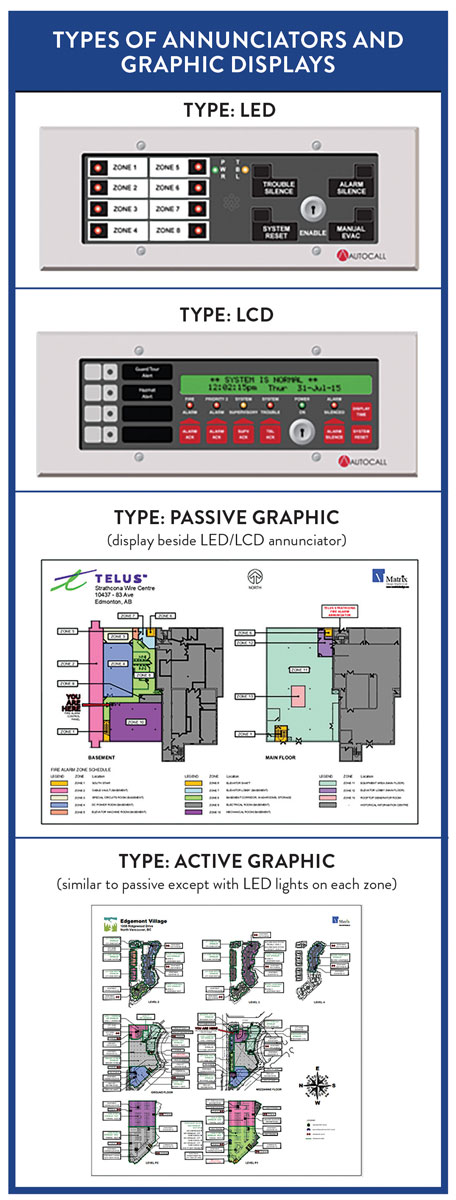It is encouraging to receive comments on the published articles, and it is even more exciting when such comments contain a wide range of follow-up and new questions.
This article is dedicated to a few questions from readers regarding the National Building Code of Canada (NBCC) provisions for electrically connected life safety systems.
Question 1
Is life safety equipment such as distribution panelboards for emergency lighting, fire pump controllers, and cables used with life safety systems required to have a fire-resistance rating by the equipment standards or by the NBCC?
I’d like to share the following observations on the subject at hand.
Answer to question 1:
No. Except for standard C22.2 No. 124 for MI cable (which has an optional fire resistance rating when MI cable is used as a “circuit integrity cable” in conformance with Article 3.2.7.10. of the NBCC), not a single CSA safety standard for electrical products covers a fire-resistance rating, as fire resistance rating is assigned only by the NBCC to certain building construction assemblies such as floors, roofs, walls, and other fire separations -in accordance with the NBCC specific provisions.
Some electrical cables/conductors’ manufacturers offer additional construction, testing, and marking requirements to the cables and conductors certified to the applicable CSA safety standards for conductors and cables when these “circuit integrity cables” are subjected to “Fire Test for Evaluation of Integrity of Electrical Power, Data and Optical Fibre Cables” in conformance with ULC S139, as stated in Article 3.2.7.10. of the NBCC.
When such circuit integrity conductors or cables (power or optical fiber) pass the necessary test, then – in addition to the CSA certification monogram, indicating that these conductors and cables meet all applicable requirements of the CSA safety standards for wiring products, such “circuit integrity cables” are provided by the manufacturer with 1 h or 2 h circuit integrity marking conforming to ULC S139 test.
Article 3.1.9.2. of the NBCC states the following:
“3.1.9.2. Combustibility of Service Penetrations
Except as permitted by Articles 3.1.9.3. and 3.1.9.5., pipes, ducts, electrical outlet boxes, totally enclosed raceways, or other similar service equipment that penetrate an assembly required to have a fire-resistance rating shall be noncombustible unless the assembly was tested incorporating that service equipment. (See Note A-3.1.9.2.(1).)”
It means that electrical equipment can only be combustible or non-combustible. Such electrical equipment, designed, constructed, tested, and certified to the applicable CSA safety standards for electrical products, is deemed to be noncombustible when it is located inside a non-combustible (metal) enclosure or non-combustible (metal) raceway.
CSA standard C22.2 No. 0, General requirements, has the following statement regarding metal enclosures for electrical equipment (i.e., for boxes and raceways):
“5.11.3
Where electrical equipment is installed in an aluminum, iron, or steel enclosure that is in accordance with a safety Standard listed in Appendix A of the Canadian Electrical Code, Part I, such enclosures are deemed to be non-combustible for the purpose of Article 3.1.9.2. of the National Building Code of Canada.”
It should be noted that Appendix A Note on Article 3.1.9.3. of the NBCC provides clarification that “electrical outlet boxes” also include enclosures for electrical equipment (i.e., switchboards, panelboards, luminaires, etc., as shown below):
“A-3.1.9.3. Outlet Boxes. For the purposes of Article 3.1.9.3., outlet boxes include, but are not limited to, electrical boxes, junction boxes, high and low voltage outlets, switches, enclosures for electrical equipment, laundry boxes, and shower diverters.”
It should also be noted that a typical ladder or ventilated cable tray would not be allowed to penetrate an assembly required to have a fire-resistance rating in accordance with Article 3.1.9.2. of the NBCC, as such cable tray is not considered to be a totally enclosed raceway per the Canadian Electrical Code, Part I (CE Code) definition.
Question 2
What types of the fire alarm systems annunciators are required by the NBCC (i.e., LED types, LCD/alpha-numeric types, or passive/active graphic displayed beside LED/LCD annunciators)?
Answer to question 2
Before getting to the answer to this question, the following undisputed facts should be considered:
- Electrical equipment (including fire alarm systems equipment) specified for installation in accordance with the CE Code must be approved (.e. designed, constructed, tested, marked, and certified) in conformance with Rule 2-024 of the Code.
- Safety standards for applicable electrical equipment are listed in Appendix A of the CE Code (CSA product standards are listed in Annex A.1, and ULC safety standards are listed in Annex A.2.)
- Fire alarm control units and annunciators must be certified to ULC S527 (this standard is listed in Annex A.1 of the CE Code)
- Construction of an “approved” annunciator must reflect the following provisions of Sentence 3.2.4.8. (2) of the NBCC.
“3.2.4.8. (2) Except as permitted by Sentence (6), the annunciator required by Sentence (1) shall have separate zone indication of the actuation of the alarm initiating devices in each
a) floor area so that the area of coverage for each zone in a building that is not sprinklered is not more than 2 000 m2,
b) floor area so that the area of coverage for each zone is neither
i) more than one storey, nor
ii) more than the system area limits specified in NFPA 13, “Installation of Sprinkler Systems,”
c) shaft required to be equipped with smoke detectors,
d) air-handling system required to be equipped with smoke detectors,
e) fire extinguishing system required by NFPA 96, “Ventilation Control and Fire Protection of Commercial Cooking Operations,”
f) contained use area,
g) impeded egress zone, and
h) fire compartment required by Sentence 3.3.3.5. (2).”
So, according to paragraph 3.2.4.8.(2)(a) of the NBCC, all fire alarm initiating devices on a floor (manual stations, smoke detectors, or heat detectors) could be represented by a single fire alarm initiating zone indicating a floor area in conformance with paragraph 3.2.4.8.(2)(a), as such arrangement will meet the general condition of Sentence 3.2.4.8. (2) “shall have separate zone indication of the actuation of the alarm initiating devices in each floor area.” Accordingly, fire alarm initiating devices specified in items (b) to (h) above would have to be represented by individual separate zone indications upon actuation of any of these alarm initiating devices located in each of the above-listed areas and specified by Articles 3.2.4.10.; 3.24.11., 3.2.4.12. or 3.2.4.15. of the NBCC, respectively. Of course, activation of a commercial kitchen fire suppression system mandated by paragraph (e) above would have to be also represented by an individual separate zone indication.
Different types of annunciators and graphic displays are shown in table 1. Therefore, based on the undisputed facts listed in table1, question 2 could be answered as follows.
A typical LED or LCD-based “approved” annunciator would be suitable under the provisions of the NBCC.
However, some municipal building by-laws and building codes would allow only specific (LED-based) annunciators.
For example, Vancouver Building By-law has revised Article 3.2.4.8. to read as follows:
“3.2.4.8. Annunciator and Zone Indication
1) Except as permitted by Sentences (3) to (5), an annunciator shall be installed in close proximity to a building entrance that faces a street or an access route for fire department vehicles that complies with Sentence 3.2.5.5.(1).
2) Except as permitted by Sentences (6), (8), (9) and (10), the annunciator required by Sentence (1) shall have separate zone indication of the actuation of the alarm initiating devices, smoke detectors, heat detectors, manual stations and waterflow detecting devices, in each
floor area so that the area of coverage for each zone in a building that is not sprinklered is not more than 2 000 m2,
——————————————————
11) The annunciator required by Sentence (1) shall have indicator lamps for the separate zone indications required by Sentence (2). (See Note A-3.2.4.8.(11).”
Appendix A Note on sentence 3.2.4.8.(110 of the VBBL provides the following clarification:
“A-3.2.4.8.(11) Annunciator Zone Indication. Although an alphanumeric display can identify any specific alarm initiating device that is activated or requires maintenance service, an annunciator panel provided with an alphanumeric display only is not acceptable to the fire department in emergency situations. In emergency situations, indicator lamps provide status information of all zones at a single glance without having to scroll through the information provided by an alphanumeric display.”
It could be seen from Sentence 3.2.4.8.(2) and Sentence 3.2.4.8.(11) of the Vancouver Building By-law that this revised local building code places additional restrictions on use of the LCD-based annunciator, and in Vancouver, only LED types of annunciators would have to be used.
The NBCC does not specifically mandate passive or active graphic displays, and a need for a particular type of graphic display is usually discussed by the code consultants and building owners with the fire department based on the complexity of the building or complexity of response points for the fire department in accordance with the adopted fire safety plan. Of course, an electrical designer must be made aware of such local requirements for a graphic display.
It should be noted that during the plan examination process, the fire department plan examiner may raise this issue, and the owner would have to be made aware of this accordingly.
As was indicated earlier, some local building by-laws specifically mandate the use of a graphic display.
As an example of such a mandate, the administrative portion of the Vancouver Building By-Law was also revised, as shown below:
“1.10.1.5. Principal Buildings
2) In the case where there is an insufficient number of numeric street addresses available, the Chief
Building Official may assign the same street number to one or more adjacent buildings on a site provided
——————————————————
-
- d) a graphic map is provided at the principal fire department access that shows the location of
each of the buildings and suites.”
Question 3
If a standpipe is provided in the building, can the required water pressure in such standpipe be provided by a booster pump instead of a fire pump, and whether electrical supervision of valves controlling water supply in a standpipe system is required?
Answer to question 3
No. Article 3.2.5.7., Appendix A Note on Article 3.2.5.7. and Appendix A Note on Article 3.2.5.18. of the NBCC state the following:
“3.2.5.7. Water Supply
1) Every building shall be provided with an adequate water supply for firefighting.
(See Note A-3.2.5.7.(1).)
A-3.2.5.7.(1) Water Supply. The intent of Sentence 3.2.5.7.(1) is that an adequate water supply for firefighting be readily available and of sufficient volume and pressure to enable emergency response personnel to control fire growth so as to enable the safe evacuation of occupants and the conduct of search and rescue operations, prevent the fire from spreading to adjacent buildings, and provide a limited measure of property protection.
The water supply requirements for buildings containing internal fire suppression systems, including sprinkler systems and standpipe systems, are contained in specific standards referenced in the Code. Compliance with the referenced standard, including any variations made by this Code, is deemed to satisfy the intent of Sentence 3.2.5.7.(1).
A-3.2.5.18.(1) Fire Pumps. In order to ensure an adequate water supply, it may be necessary to install a fire pump for a building that has either a standpipe system or an automatic sprinkler system installed.”
It could be seen from the above indicated NBCC provisions that a fire pump is required to provide adequate pressure in a standpipe system and that use of a booster pump is not permitted in this case. It means that if the electrically connected fire pump is used, an emergency generator must be provided for this fire pump in conformance with Article 3.2.7.9. of the NBCC, and this emergency generator must be located in the dedicated 2 h rated service room in accordance with Article 3.6.2.8. of the NBCC. It also means that disconnecting means, overcurrent protection, and the transfer switch for such a fire pump would have to comply with Rules 32-306 – 32-308 of the CE Code.
Sentence 3.2.4.9.(2) of the NBCC states that electrical supervision of valves controlling water supplies in a standpipe system must be provided (see below):
“3.2.4.9. Electrical Supervision
1) Electrical supervision shall be provided for a fire alarm system.
2) If a fire alarm system in a building is required to have an annunciator by Sentence 3.2.4.8.(1), except for hose valves, all valves controlling water supplies in a standpipe system shall be equipped with an electrically supervised switch for transmitting a trouble signal to the annunciator in the event of movement of the valve handle.”
Hopefully, this article clarifies the questions submitted by the readers.
And as usual, the local AHJs should always be contacted regarding specific questions related to individual installations.
















Find Us on Socials